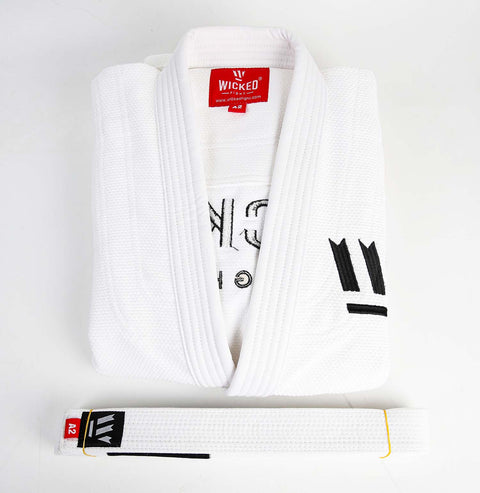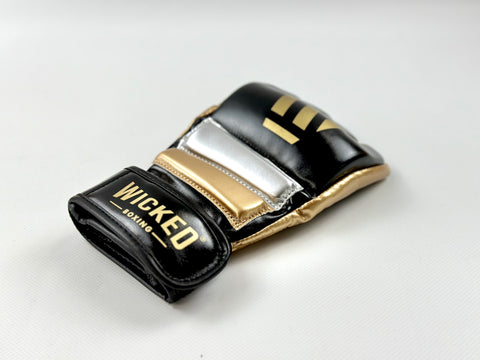Jiu Jitsu, a martial art known for its technical intricacies and physical demands, requires practitioners to carefully consider every aspect of their gear. Among the most essential pieces of equipment is the Jiu Jitsu Gi – a traditional uniform that plays a crucial role in training and competition. One important factor to consider when choosing a Gi is its weight. In this blog, we'll delve into the significance of Jiu Jitsu Gi weight and how finding the right balance can contribute to your overall performance on the mat.
Understanding Jiu Jitsu Gi Weight: The weight of a Jiu Jitsu Gi refers to the fabric's density and thickness. Gis come in various weights, typically measured in ounces per square yard (oz/yd²). Lighter Gis generally have lower ounce measurements, while heavier ones have higher ounce measurements. The choice between a lighter or heavier Gi depends on several factors, including personal preference, training goals, and competition requirements.
Benefits of a Lighter Gi:
Mobility and Speed: Lighter Gis provide greater mobility, allowing you to move more freely and execute techniques with agility. This can be advantageous for practitioners who rely on speed and fluid movement.
Temperature Regulation: Lighter Gis are more breathable, making them suitable for training in warmer climates or during intense training sessions where you're likely to sweat.
Quick Drying: The reduced fabric weight allows lighter Gis to dry faster, minimizing the risk of odor and bacteria buildup.
Competition Advantage: In certain competitions, a lighter Gi might give you a slight edge due to its potential to enhance movement and reduce fatigue during matches.
Benefits of a Heavier Gi:
Durability: Heavier Gis are often constructed from thicker, more robust materials, making them more resistant to wear and tear over time.
Grip Control: The added weight of a heavier Gi can give you an advantage when controlling your opponent during matches, especially in situations that involve gripping and holding.
Resistance to Grips: Heavier Gis can be harder for opponents to grip, making it more challenging for them to execute certain techniques or submissions.
Traditional Feel: Some practitioners prefer the feel of a heavier Gi, as it can provide a more traditional and authentic Jiu Jitsu experience.
Finding the Right Balance: Choosing the appropriate Gi weight depends on your training style, preferences, and intended use. Here's how to find the right balance:
Assess Your Goals: Determine whether you prioritize speed and agility or durability and grip control. Consider your training environment and competition requirements.
Experiment: If possible, try Gis of different weights during training sessions to see which one complements your style and comfort.
Check Competition Rules: If you're a competitor, ensure that you're aware of the Gi weight restrictions imposed by the governing body of the tournaments you plan to participate in.
Quality Matters: Regardless of weight, prioritize a high-quality Gi made from durable materials. A well-constructed Gi will provide the best of both worlds – durability and performance.
The weight of your Jiu Jitsu Gi is a crucial consideration that can impact your training and competition experiences. Whether you choose a lighter Gi for enhanced mobility or a heavier one for durability and grip control, finding the right balance is key. Ultimately, the ideal Gi weight is a personal choice that should align with your training goals, style, and comfort. By understanding the benefits of different Gi weights and considering your specific needs, you'll be better equipped to select a Gi that enhances your performance and allows you to excel on the Jiu Jitsu mat.




